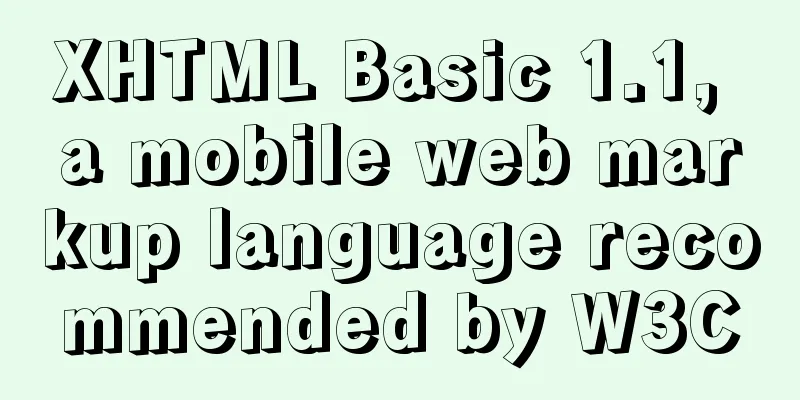XHTML Basic 1.1, a mobile web markup language recommended by W3C

|
W3C recently released two standards, namely " XHTML Basic1.1 " and " Mobile Web Best Practices 1.0 ". Both standards are targeted at the mobile Web, with XHTML Basic 1.1 being the W3C's recommended markup language for the mobile Web. XHTML Basic 1.1 There are many branches of mobile markup language. The release of XHTML Basic 1.1 provides a standard for mobile markup language. XHTML Basic 1.1 includes the following new features:
W3C summarizes 10 basic rules from " Mobile Web Best Practices" : Design web pages consistently for multiple devices. When designing mobile web pages, various devices must be taken into consideration to reduce costs and increase flexibility.
International sources of this article: http://www.cmswire.com/cms/web-publishing/xhtml-11-released-mobile-best-practices-proclaimed-002984.php; http://www.w3.org/2007/02/mwbp_flip_cards |
<<: Detailed explanation of docker version es, milvus, minio startup commands
Recommend
Detailed explanation of SQL injection - security (Part 2)
If there are any errors in this article or you ha...
Use CSS to achieve circular wave effect
I often see some circular wave graphics on mobile...
Detailed graphic description of the database installation process of MySQL version 5.7.24
MySQL is the most popular relational database man...
Detailed explanation of the solution to the problem that the font in HTML cannot be vertically centered even with line-height
by Take the effect shown in the picture as an exa...
Detailed example of deploying Nginx+Apache dynamic and static separation
Introduction to Nginx dynamic and static separati...
Detailed explanation of desktop application using Vue3 and Electron
Table of contents Vue CLI builds a Vue project Vu...
Analysis of the principle and usage of MySQL continuous aggregation
This article uses examples to illustrate the prin...
How to build a React project with Vite
Table of contents Preface Create a Vite project R...
Summary of MySql storage engine and index related knowledge
Storage Engine What is a database storage engine?...
Problems encountered when installing mysql8.0.15 winx64 on Win10 and connecting to the server
1. Download, install and configure mysql-8.0.15 1...
The solution record of Vue failing to obtain the element for the first time
Preface The solution to the problem of not being ...
Solution to the problem that elements with negative z-index cannot be clicked
I was working on a pop-up ad recently. Since the d...
Detailed explanation of the steps of using ElementUI in actual projects
Table of contents 1. Table self-sorting 2. Paging...
Javascript destructuring assignment details
Table of contents 1. Array deconstruction 2. Obje...
Detailed explanation of possible problems in converting floating point data to character data in MySQL
Preface This article mainly introduces a problem ...









